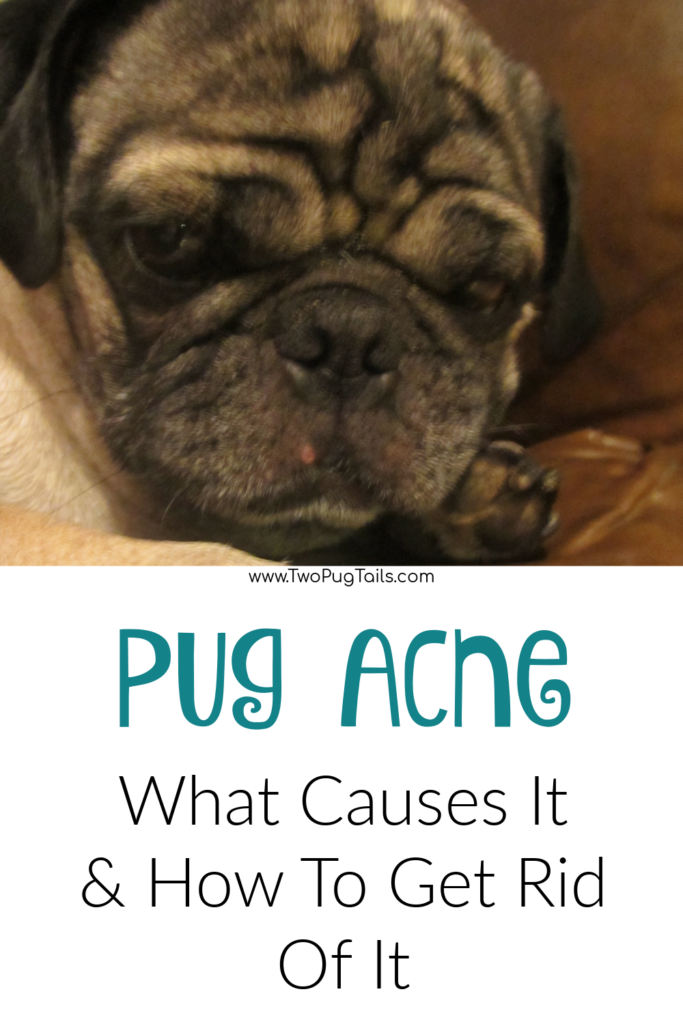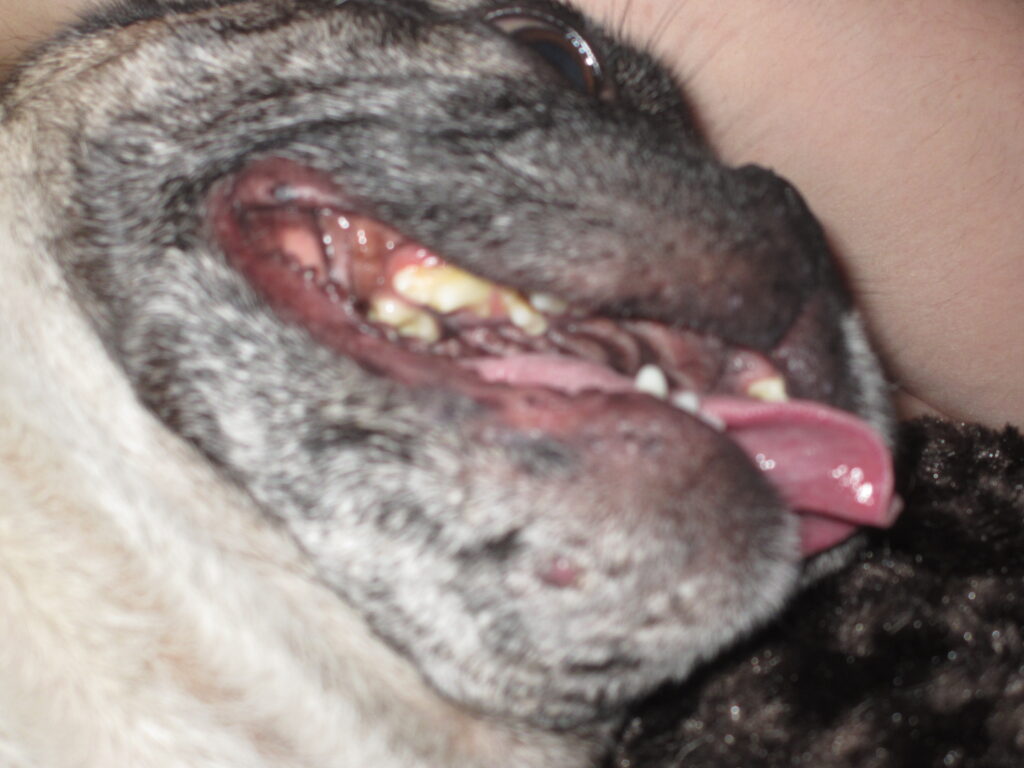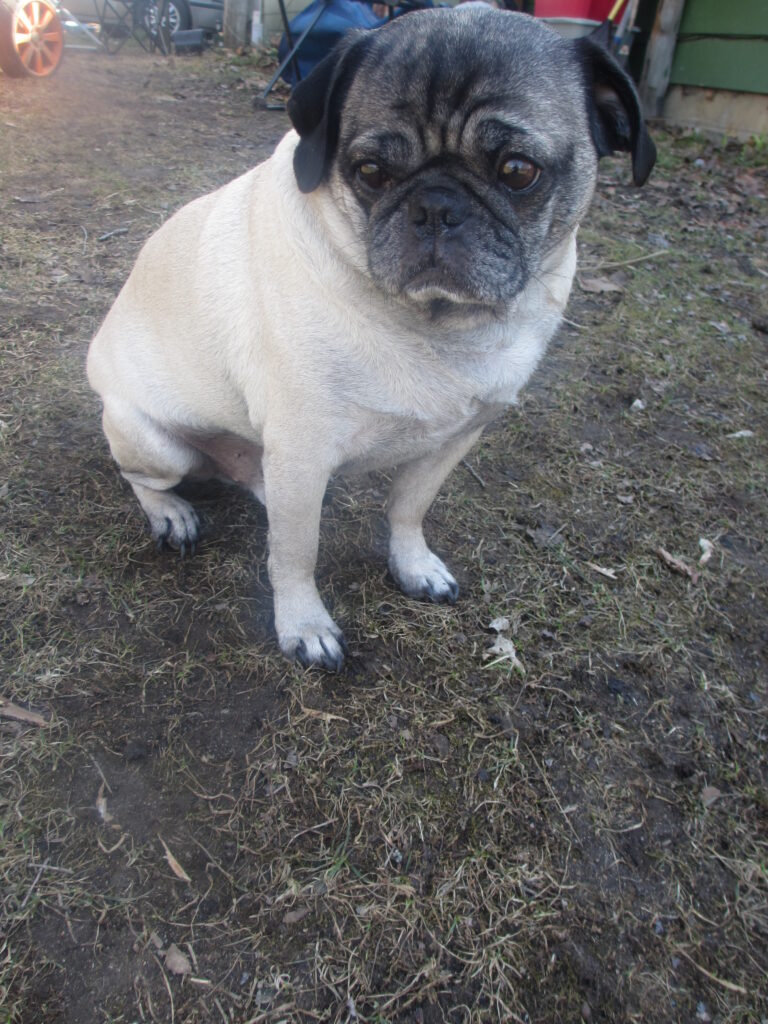
Pug Pimples Or Pug Acne | What Causes It & How To Get Rid Of It
My Pug Gets Bumps On His Muzzle. What Is That?
It’s likely pug acne or dog acne. Yep, dogs can get pimples just like people! It’s a really similar cause, too. Any kind of dog can get acne but it’s more common in breeds with short hair, including pugs. Their heavily wrinkled faces make them more prone to it as well.
What Causes Acne In Pugs?
Clogged pores. Basically, acne is caused by your dogs sebum (natural skin oils), bacteria and dead skin cells building up on the surface of the skin and clogging the pores. When the pores get clogged, the immune system responds to try to fight the bacteria and acne develops.
In other words, it’s caused by the area getting too dirty. However, how frequently the area needs to be cleaned can vary from dog to dog. Some dogs will experience acne with really low levels of bacteria and sebum buildup, while others have a higher tolerance. So, it’s not necessarily that your dog is extra dirty if they’re getting acne. They may just get acne with less bacteria than other dogs. It’s common for pugs to develop acne more easily.
Age is a factor. Younger dogs create more sebum than older dogs, so they’re more prone to their pores getting clogged.
Regardless f the cause, if your dog is experiencing pimples that means they need their skin cared for differently.

How To Reduce Pug Acne
Keep them dry. Many pugs get acne on their lower jaw. Pugs have slight jowls which can leave their lower mouth wet after drinking from their water dish. For some reason my pug Beans used to almost always have a damp lower mouth! I assume it was just something about the shape of her muzzle. If you have a pug like that where their fur stays wet for a long time after drinking, this may increase the odds of bacteria spreading. In that case, drying off their mouth after drinking may help.
Keep Them Clean. If your dog makes a big mess while eating, washing their muzzle after meal time can greatly reduce any occurrence of acne. Even if they don’t get visibly dirty around their mouth, washing their face/mouth can wipe away excess skin cells and excess sebum to keep their pores from getting clogged.
Ditch the plastic bowl. Plastic water and food dishes for dogs can breed bacteria a lot worse than other materials because plastic is somewhat porous. Changing to stainless steel bowls, glass or ceramic can help. We used plastic dog bowls when we first got our pugs but Frank developed acne so we switched to stainless steel bowls. They were a little more pricy but they lasted us for years.
Wash their food and water dish daily. Even with stainless steel bowls, bacteria can build if the dish isn’t washed regularly so be sure to keep it clean.
Keep wounds/sores extra clean. If your dog gets injured and has an open wound, that area will be extra prone to developing irritation or infection. If your dog ever gets injured around their mouth, be extra diligent about keeping the area clean and dry to avoid an acne outbreak.
A healthy diet. Again, like people, diet can impact our skin health. If your pug is on a high-quality diet, they’re more likely to have fewer skn and fur problems compared ot if they are on low-quality dog food.
Wash their toys regularly. Any toys that your pug puts in their mouth get germs on them. If bacteria builds up on your dog’s toy and then they play with it again, that bacteria can transfer onto your dog and cause acne or other problems. Wash their toys regularly to keep them clean.
Don’t let your dog rub or itch. Once your dog has a pimple, they’re likely to try to scratch the area as it may itch. If your dog rubs their muzzle along firm surfaces r paws at their face, this can further irritate their hair follicles or even break off hairs which ca leave their facial pores more open and more likely to develop even more acne.
Try a dog acne shampoo. They make dog shampoos that are designed to flush the hair follicles, usually with topical benzoyl peroxide.

How long does pug acne last?
Dog acne can last up to 12 weeks in severe cases.
If you have a young pug who seems to have acne due to their age, keep in mind that it is still about sebum clogging their pores. Younger pugs will have more sebum and may be especially prone to acne, but it won’t likely entirely go away once they’re older. It’s best to try to find a hygiene routine that stops the acne.

For severe pug acne
If your pug’s acne is severe, it’s time to visit a vet. Signs that it has gotten severe is if the pimples have bled, if their mouth or lips are swollen, if hair loss has occurred, or if here is oozig. Acne can develop into bacterial or fungal infections among other big problems. In some cases dogs may need steroid treatments, antibiotics or other treatments that only a vet can provide.
Can You Pop Pug Pimples?
Your pug’s zits should be left alone, not popped. Popping the zit can cause further trauma to the skin and leave it open to more irritation and inflammation, leading to more problems.

Leave a Comment